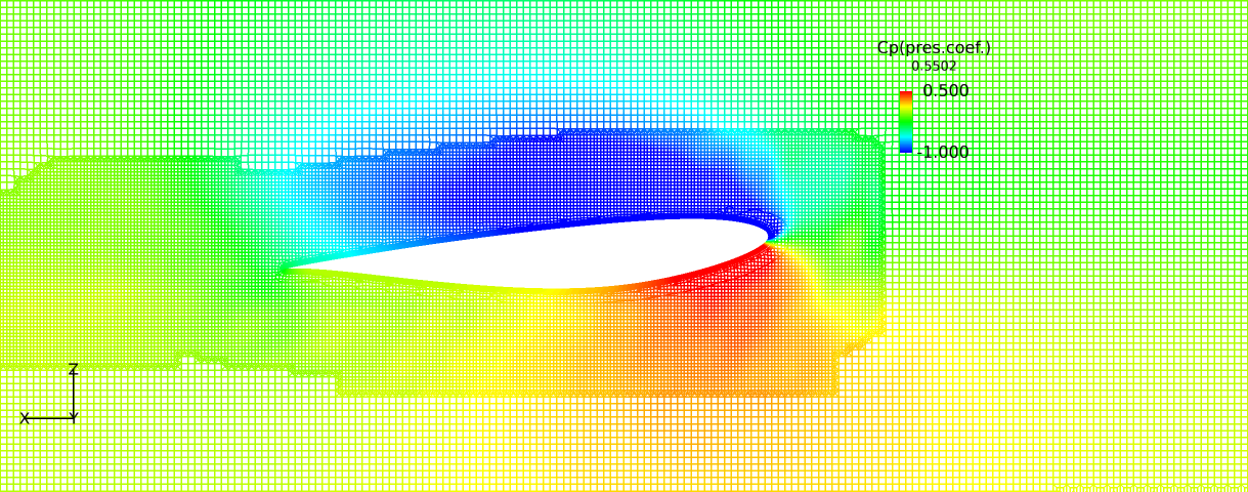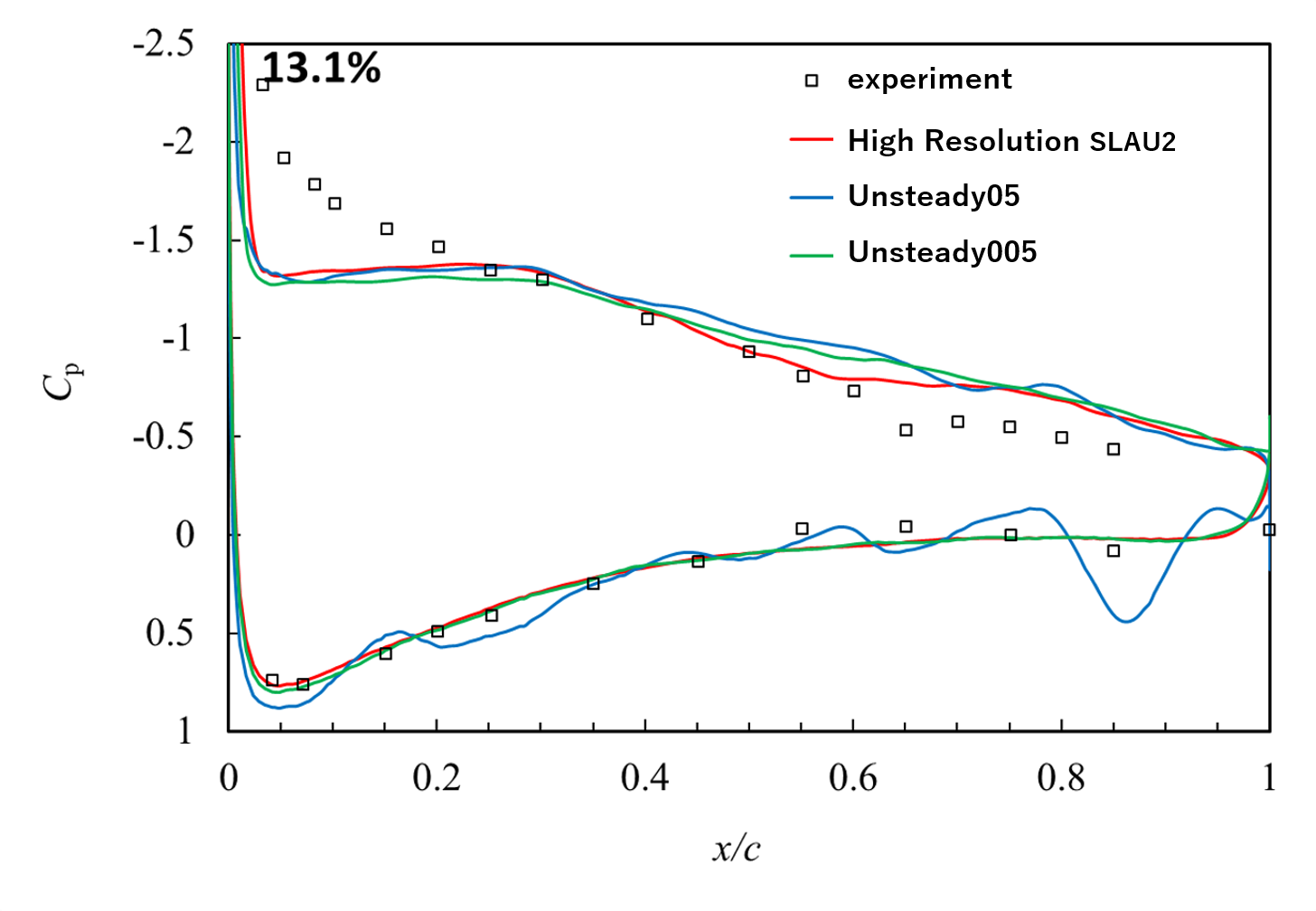High-Resolution, Efficient CFD Methods by Second Slope Limiter for Transonic Speeds
JAXA Supercomputer System Annual Report April 2019-March 2020
Report Number: R19EDA201N10
Subject Category: Aeronautical Technology
- Responsible Representative: Keiichi Kitamura, Yokohama National University, Faculty of Engineering, Division of Systems Research
- Contact Information: Keiichi Kitamura(kitamura@ynu.ac.jp)
- Members: Atsushi Hashimoto, Keiichi Kitamura, Suguru Ogawa, Yuuya Takagi, Hiroyuki Takimoto, Hiroto Yaginuma, Masashi Kanamori, Naoya Hase, Hayato Kawashima, Yoshikatsu Furusawa, Takuma Yamaguchi, Fumiya Tsutsui, Yuya Yasumura, Tomohiro Mamashita, Hironari Toriumi
Abstract
A high-resolution, Delayed DES has been conducted around whole the aircraft under the low-speed buffet condition. This numerical case is known as a tough problem, since it is difficult to obtain good numerical solutions that agree well with the corresponding experimental data. In this study, we introduced a new, unsteady-preconditioning function which controls the numerical dissipation to control grid-dependent, unsteady numerical oscillations. Its effect has been confirmed by the numerical test without undesirable influences on the surface pressure coefficient.
Reference URL
N/A
Reasons and benefits of using JAXA Supercomputer System
1) Expensive, unsteady CFD around whole the aircraft; 2) Many numerical cases (aerodynamic problems) in which our proposed schemes are verified.
Achievements of the Year
For high resolution SLAU2 (HR-SLAU2) which generated slight numerical oscillations, we incorporated a new, unsteady-preconditioning function to control the oscillations (“unsteady05”, “unsteady005”). As a result, we succeeded in changing the amplitude of the numerical oscillations by changing the preconditioning constant. According to the pressure coefficients, it was also confirmed that the solution was not deteriorated by the dissipation control. In the future, we will establish a new function that can suppress numerical oscillations under various conditions by incorporating a variable threshold value instead of the constant.
Publications
– Oral Presentations
– K. Kitamura, S. Ogawa, H. Takimoto, M. Kanamori, A. Hashimoto: Low Speed Buffet Simulation using High-Resolution Delayed-DES with Improved LES/RANS Transition, Asia Pacific International Symposium on Aerospace Technology (APISAT) 2019, Surfers Paradise Marriott Resort, Gold Coast, 4-6 December 2019.
– K. Kitamura, S. Ogawa, H. Takimoto, M. Kanamori, A. Hashimoto: High-Resolution Delayed-Detached-Eddy-Simulation (HR-DDES) on Low Speed Buffet, 51st FDC/37thANSS, 2E02, July 2019.
Usage of JSS2
Computational Information
- Process Parallelization Methods: MPI
- Thread Parallelization Methods: OpenMP
- Number of Processes: 512
- Elapsed Time per Case: 50 Hour(s)
Resources Used
Fraction of Usage in Total Resources*1(%): 2.17
Details
Please refer to System Configuration of JSS2 for the system configuration and major specifications of JSS2.
| System Name | Amount of Core Time(core x hours) | Fraction of Usage*2(%) |
|---|---|---|
| SORA-MA | 16,511,937.74 | 2.01 |
| SORA-PP | 273,095.77 | 1.77 |
| SORA-LM | 30,795.18 | 12.86 |
| SORA-TPP | 0.00 | 0.00 |
| File System Name | Storage Assigned(GiB) | Fraction of Usage*2(%) |
|---|---|---|
| /home | 1,109.86 | 0.92 |
| /data | 90,682.66 | 1.55 |
| /ltmp | 27,094.97 | 2.30 |
| Archiver Name | Storage Used(TiB) | Fraction of Usage*2(%) |
|---|---|---|
| J-SPACE | 84.78 | 2.13 |
*1: Fraction of Usage in Total Resources: Weighted average of three resource types (Computing, File System, and Archiver).
*2: Fraction of Usage:Percentage of usage relative to each resource used in one year.
JAXA Supercomputer System Annual Report April 2019-March 2020






